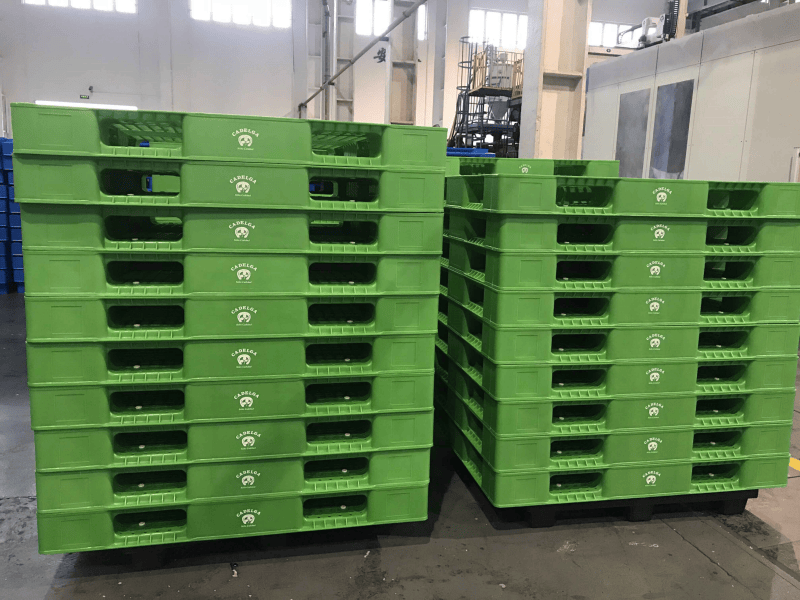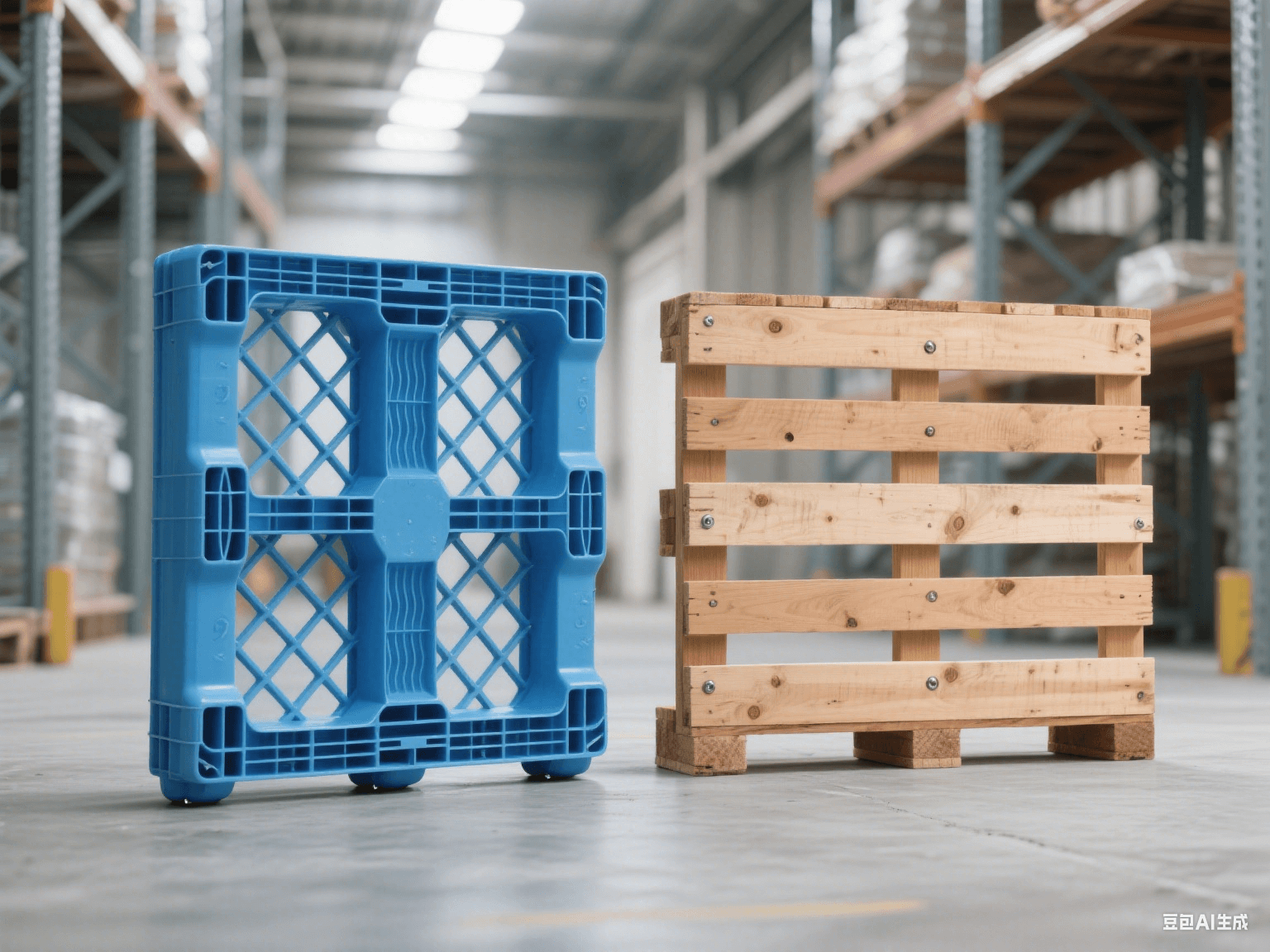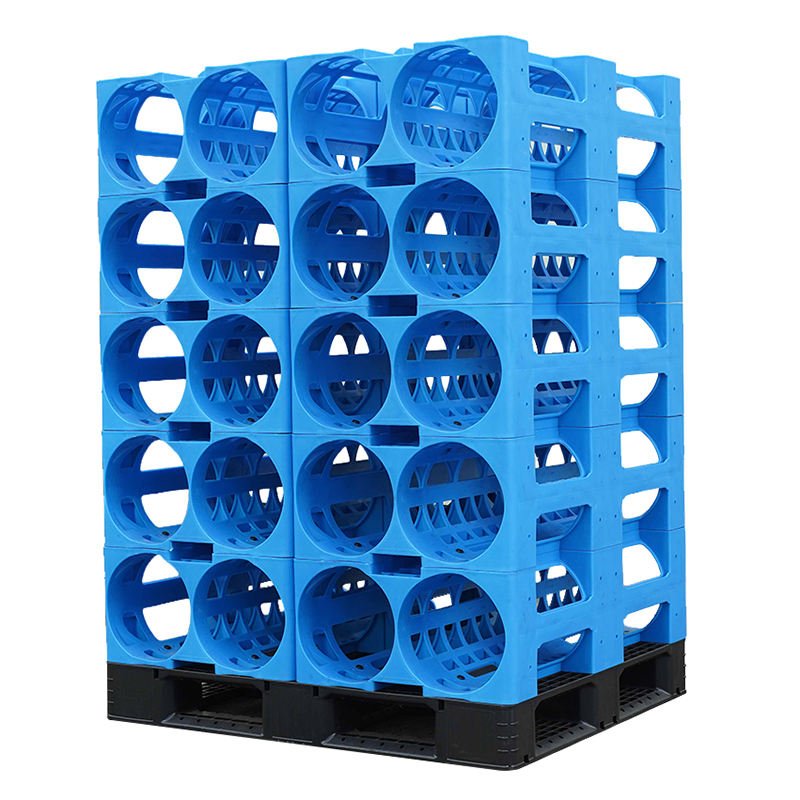Why Cold Chain Logistics Requires Specialized Pallet Solutions
In cold chain logistics, maintaining product integrity hinges on more than just temperature—it demands specialized handling tools. Traditional wooden pallets often absorb moisture, warp under freezing conditions, and fail hygiene standards. For temperature-sensitive sectors such as seafood, pharmaceuticals, and dairy, this poses a serious contamination risk. Plastic pallets provide a non-porous, mold-resistant alternative, making them an ideal solution for cold storage and refrigerated transportation.
Core Advantages of Plastic Pallets in Cold Chain Operations
Plastic pallets are engineered for stability across extreme conditions, performing reliably from -30°C to +60°C. Their closed surfaces and seamless structures reduce bacterial growth, ensuring compliance with food-grade and pharma-grade regulations like FDA, HACCP, and ISO. They are washable, reusable, and resistant to corrosion, making them a long-lasting asset in demanding environments. Their durability also reduces breakage-related downtime in automated or manual handling systems.
Use Cases Across the Cold Chain: From Seafood to Pharma
From frozen fish processing plants to vaccine cold rooms, plastic pallets serve diverse roles across the cold chain. Their chemical resistance and cleanability make them suitable for pharmaceutical cleanrooms, while ventilated designs help in fresh produce air circulation. In export logistics, plastic pallets are favored for being ISPM 15 exempt, avoiding fumigation or heat treatment delays. This versatility ensures seamless integration across warehousing, transport, and last-mile delivery.
Selecting the Right Plastic Pallet for Cold Chain Logistics
Choosing the correct pallet structure is essential. Rackable plastic pallets are ideal for vertical cold storage, while stackable or nestable types work well in distribution centers. Features like anti-slip strips, closed decks, and reinforced corners enhance safety and load security. For end-to-end visibility, RFID-embedded pallets support real-time tracking and temperature monitoring. Buyers should consider load requirements, surface design, and stacking logic when sourcing.
Compliance, Safety, and Long-Term Cost Efficiency
Unlike wood, plastic pallets don’t splinter, harbor pests, or degrade from repeated freezing. Their compliance with international hygiene standards ensures smooth cross-border transit. Though the upfront cost is higher, plastic pallets offer a longer service life, reduced maintenance, and lower replacement rates, contributing to a better total cost of ownership (TCO). They also support lean logistics by minimizing inventory contamination risks.
Future Outlook: Sustainability and Smart Integration in Cold Chains
As ESG goals influence procurement, plastic pallets stand out for being fully recyclable and available in eco-reprocessed materials. Meanwhile, integration with IoT solutions—like temperature sensors and GPS tags—further elevates their value in cold chain visibility and risk control. They are no longer just transport tools but part of a smart logistics infrastructure, driving operational resilience and sustainability.




